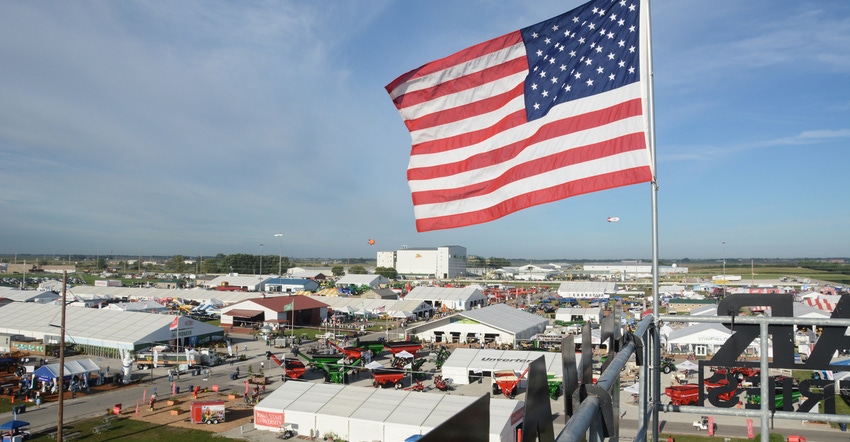
Matt Jungmann and his staff had a lightbulb moment a few years ago when high winds took down the stage at the Indiana State Fair and seven people were killed. As the national events director for Penton Ag and manager of the Farm Progress Show — an all-outdoor event that brings tens of thousands of people to a site populated by tents and temporary structures — Jungmann knew they needed a better plan for bad weather.
And while severe weather isn’t as likely in late August or September, it’s not impossible either. In 2011, Jungmann made the call to shut down Husker Harvest Days, a sister show in Nebraska, when sustained winds reached 40 mph and were gusting to 60 mph, threatening tents. In 2014, he closed the Farm Progress Show in Boone, Iowa, early due to lightning.
“That was a pretty stressful event for everybody involved. Nobody wants to close the show, but I don’t want anybody to get hurt,” Jungmann says. “I can’t have somebody get hurt on the show grounds.
“With that many tents and grain legs and augers, there are a lot of things that are 60 and 80 feet in the air,” he explains. “It’s an 80-acre lightning rod. There is no safe place in a lightning event.”
Prescription for safety
Thanks to standards created through the Event Safety Alliance, formed in the wake of the Indiana State Fair tragedy, there are measurements and responses based on a prescribed action plan. For example, when lightning gets within 12 miles, a warning is given over the public address system. When it’s within 8 miles, the grounds are cleared; when it’s clear within 8 miles for 30 minutes, the grounds can be reopened.
In effect, clearing the grounds means everyone must return to their vehicles.
Jungmann says those kinds of plans bring peace of mind to exhibitors, too, who have a lot of people at the show to protect.
“They need a plan and we need a plan, and it’s safer for everybody involved,” he adds. “There are a lot of shows that will wing it based on the forecast, and that was us in the past.”
Previously, Jungmann and show managers relied on the county emergency manager and the National Weather Service, which provides updates and warnings are for an entire county and not a specific location.
While those resources are still important, beginning with last year’s Farm Progress Show, Jungmann contracted a private weather team, Weather Decision Technologies, to provide forecasting and updates based on the show’s exact GPS coordinates. The team provides Jungmann with a dedicated meteorologist looking out for staff, exhibitors and visitors.
“This is the time of year when winter farm shows are over. The 600-piece puzzle that is the Farm Progress Show is in motion, and we’re working on preparation and education,” Jungmann says. “It was a terrible tragedy in Indianapolis, but something good has come from it. I can sit in a room with outdoor concert managers and take the message back to the farm show people: We need to have plans and procedures so we can keep everybody safe.”
Hosted by Prairie Farmer, the 2017 Farm Progress Show will be held in Decatur, Ill., Aug. 29-31.
About the Author(s)
You May Also Like






